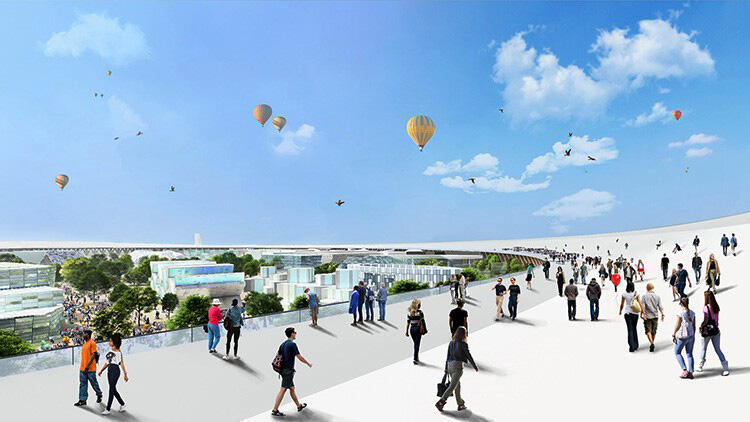
"Expo 2025 Osaka, Kansai, Japan" is the first international exposition held in Japan since "Expo 2005 Aichi, Japan" 20 years ago. Its logo, which expresses the theme of "Designing Future Society for Our Lives," became a topic of conversation immediately after the announcement. We interviewed Mr. Harutoshi Imamura, Division Chief (at the time of the interview), Strategic Business Planning & Promotion Department, Public Relations Strategy Bureau, Japan Association for the 2025 World Exposition, who is preparing the event.
A "New Expo" begins in the Expo city
Osaka is a city of expositions. The Japan World Exposition (Expo '70) held in 1970 at Senri Hills (Suita City, Osaka Prefecture) is still in the hearts and minds of the people of Osaka even after half a century.
Expo '70 became an opportunity for Japan to boast about its rapidly growing science and technology sectors and exude presence to the world amid a period of rapid economic growth. Under the theme of "Progress and Harmony for Mankind," the Expo brought together new technologies and cultures worldwide. The future of science and technology, seen from that time, such as linear motor cars, electric cars, and cell phones, remained in the eyes of some 65 million visitors.
While expectations are growing for Expo 2025 Osaka, Imamura says, "I believe that this Expo will be something that overturns the conventional image of the event."
"When I asked elderly men and women about Expo '70, they would say, 'I miss it. I'm looking forward to the next one. So, what kind of "tower" will be built this time?' In this Expo, we will not present one particular symbol, but I would like to work with everyone to create a new Expo." (Mr. Imamura, hereafter)
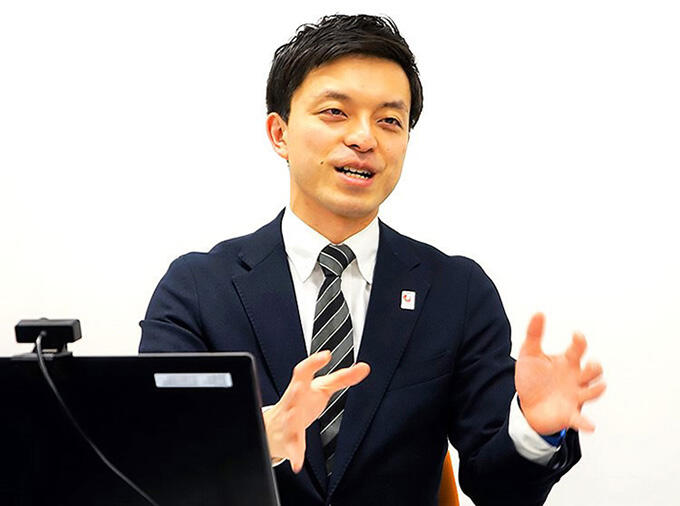
(Interview conducted in March 2021)
"Designing Future Society for Our Lives "
A "World Expo" is an "international exposition" held based on an international treaty called the BIE Convention, upon approval by the Bureau of International des Expositions (BIE). BIE began in 1928, with its headquarters in Paris, France. As of May 2021, the number of member countries has reached 169.
Japan has hosted five expositions to date: the Japan World Exposition (Osaka, 1970), the Okinawa International Ocean Exposition (Okinawa, 1975), the International Science and Technology Exposition (Ibaraki, 1985), the International Garden and Greenery Exposition (Osaka, 1990), and the 2005 World Exposition, Aichi, Japan (Aichi, 2005) (See Table 1).
International expositions are divided into two main categories: "registered expositions" (Registered Expo) and "specialized expositions" (Specialized Expo). Formerly, they were divided into "general expositions" (General Expo) and "special expositions" (Special Expo), but the BIE Convention was revised in 1988 to create the current classification.
Expo '70 was held as a General Expo. The upcoming Expo 2025 Osaka is a Registered Expo, which has to have a broad and latitudinous theme and is held every five years for a maximum of six months. On the other hand, a Specialized Expo lasts for three months or below and only takes place once between two Registered Expos with five-year interval (exceptionally, the Okinawa International Ocean Expo and the International Science and Technology Expo lasted six months).
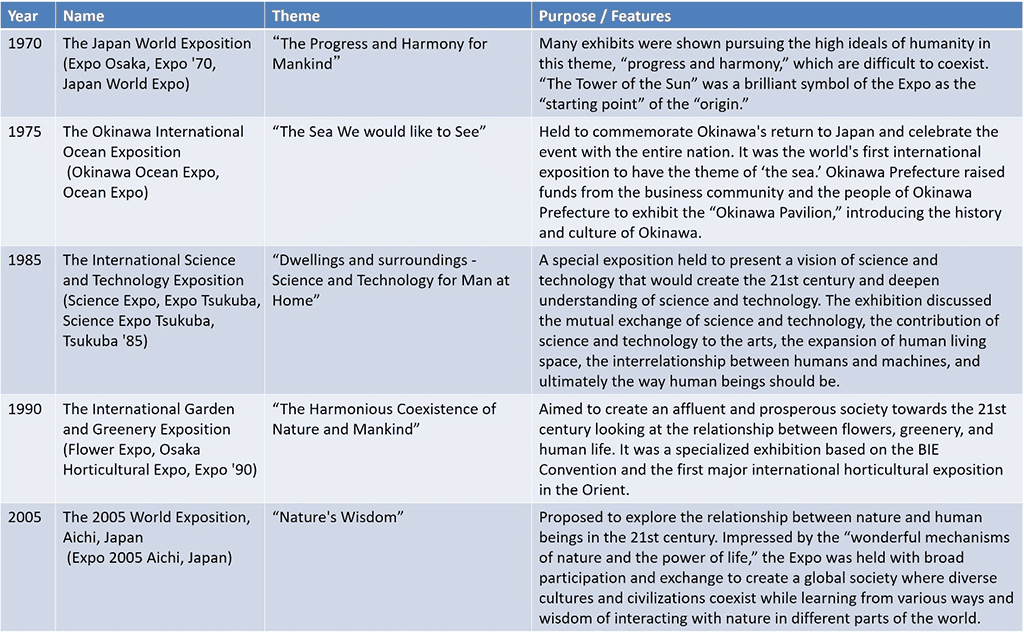
So, what is new about Expo 2025 Osaka, Kansai? The most important feature of the Expo is that it aims for co-creation. "The Expos in the past were places to demonstrate national prestige and the latest science and technologies. The Expos of the new era value the notion of creating together," says Imamura.
To realize the theme of "Designing Future Society for Our Lives," 150 countries and 25 international organizations, as well as corporations and citizens' groups, will participate in Expo 2025. It aims to achieve the Sustainable Development Goals (SDGs) and depict the future beyond the goals (See Fig.1).
"Contributing to achieving the SDGs is one of the vital missions of this Expo. 'Lives' in the theme does not refer to human life alone. Since ancient times, Japan has had a saying, 'all things have a spirit.' I believe that the Expo will be an opportunity to think about diverse lives of all living things, and even of the earth that nurtures them."
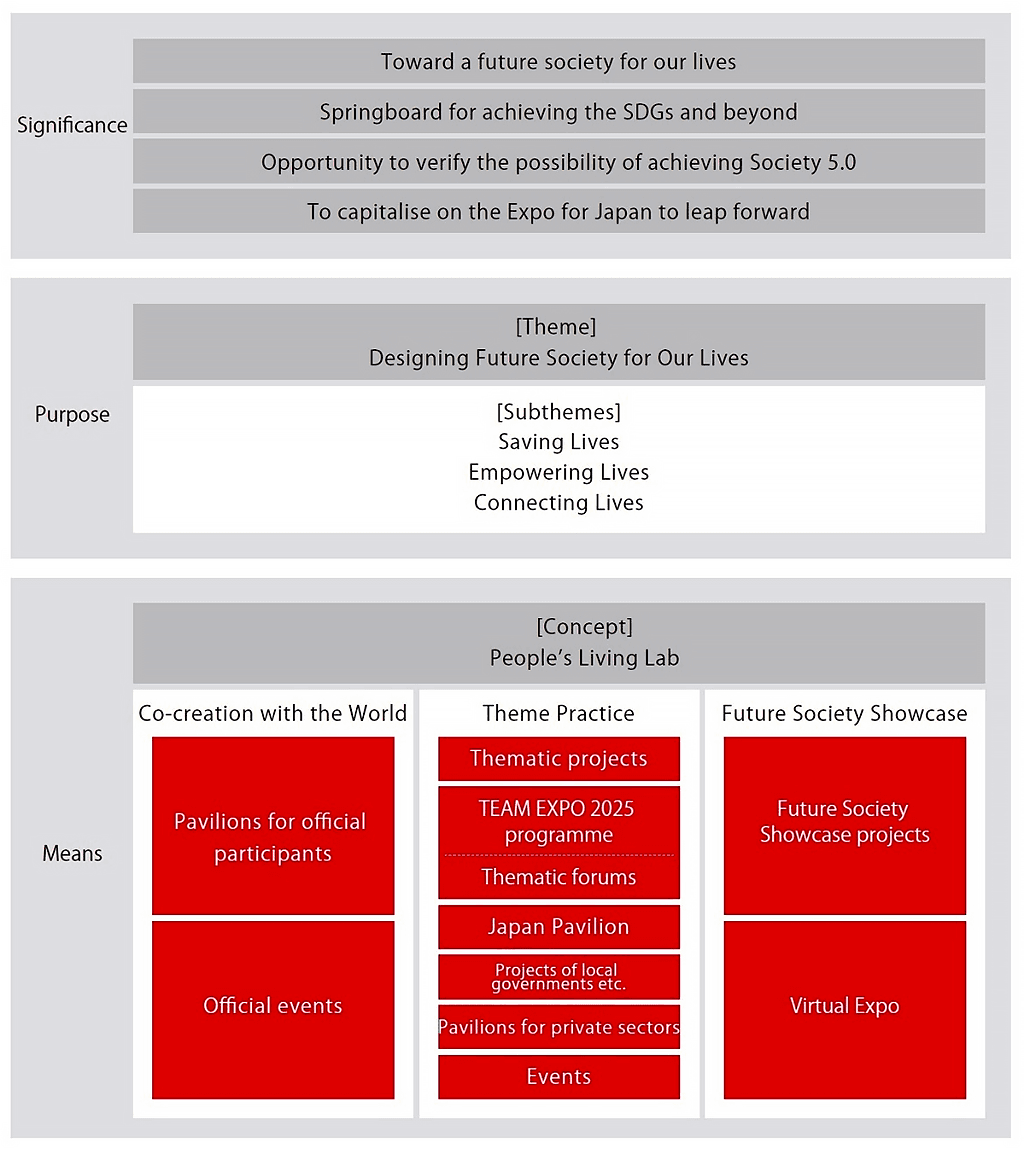
What is "TEAM EXPO 2025" that symbolizes co-creation?
The specific ways to participate in Expo 2025 include exhibiting at pavilions and sponsoring themed projects undertaken by eight front runners from various fields. From among these, the "TEAM EXPO 2025" program ("TEAM EXPO" hereafter), which will run from before through to after the event finishes, is a participatory program that invites proactive groups from the general public to join in. It is going to break through the conventional notion of "An Expo is something you go and see."
There are two ways to enter TEAM EXPO. One is the "Co-Creation Challenge," which is open to individuals and teams taking or planning any proactive action to realize the theme; this indeed requires the power of individuals.
The other is an entry as "Co-Creation Partner," which calls for corporations and organizations responsible for creating and supporting various co-creation challenges. They are required to endorse this program and develop their unique activities that match the program proactively and continuously.
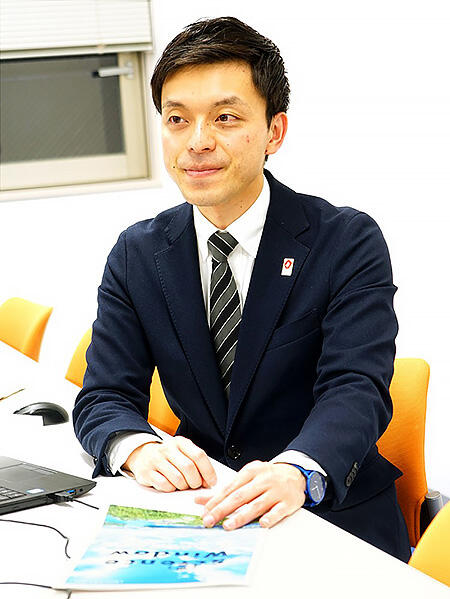
There used to be inevitably a gap in how people interacted: For example people on stage compared to those in the audience. However, he appeals, "In the upcoming Expo, everyone can take a leading role. Let's work together to create the Expo."
"I expect participants, through TEAM EXPO, to work with other members to solve as many issues at hand as possible and pile up experiences by which you can feel society has become a little better. I believe that the key to solving the big issues of the SDGs surely lies in the voices of individual people and communities."
A "Huge Cultural Festival" on a global scale
The application process for TEAM EXPO started in October 2020, and in the six months up to March 2021, 105 individuals/groups have registered for the "Co-Creation Challenge," and 59 organizations have come forward as "Co-Creation Partners," with the number still growing. "There are various projects: some are with a regional focus and others have an eye on overseas expansion. We have received more ideas than we had imagined, and I'm excited about future developments," says Imamura.
For example, the robot science club of Otemon Gakuin Otemae Junior and Senior High School is proposing ideas to contribute to the achievement of the SDGs under the theme of "Osaka's Youth Challenge: Robot Development Project to Solve the SDGs."
The light music club of Osaka Prefectural Sakurazuka High School has joined the program under the theme of "Promoting the Expo to the World with Original Music!" The students wrote and composed an original song to cheer the Expo and prepared an English version to distribute to the world via YouTube, which was not a request from the association but a spontaneous action of their own.
Co-creation partners have also organically linked with individual co-creation challenges, creating synergistic effects beyond the association's expectations. These projects will not end just as each group's effort but should develop into something bigger involving other challenges and partners. It is indeed "Creating an Expo together," under the theme of co-creation.
In addition, Expo 2025 will provide TEAM EXPO participants with both real and virtual (online) communication opportunities (see Fig.2). It is expected that sharing the results of pre-Expo activities will create new collaborations and co-creation, transcending time and space constraints.

"Thanks to TEAM EXPO, there are no longer any restrictions on the Expo's duration or venue. Expo 2025 has already begun, and there is no need to specify an end in 2025. We want to expand the circle of activities further and encourage people worldwide to participate so that the activities of TEAM EXPO will remain as a legacy even after the Expo is over. In that sense, an Expo could be a 'Huge Cultural Festival.'"
Each of us will open a new era
Each of us takes a leading role and expresses life. Expo is about to become a place that embraces and accepts this idea. Imamura strongly felt this when he took charge of the project to create the logo mark, announced in August 2020.
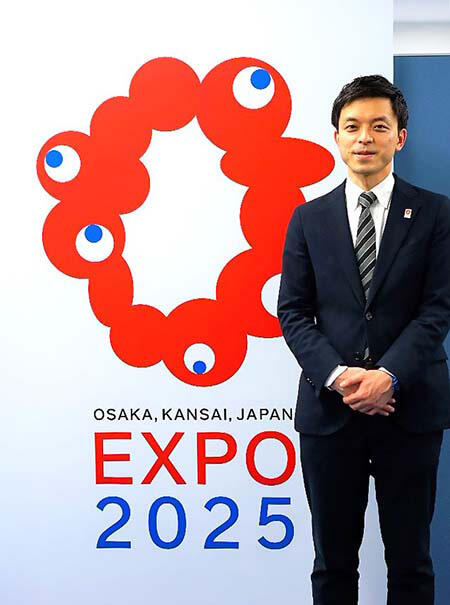
What do you associate this logo with? People searched for something that resembled the logo on the Internet, such as a plant called guarana or a doughnut, and it was like a big comedy game.
"I was amazed at the great response to the logo and thought that if everyone enjoyed themselves and participated spontaneously, it would lead to 'Creating an Expo together.' As long as you meet certain requirements, you can participate in TEAM EXPO in various ways on any theme you wish to work. I hope that you will consider registering with the co-creation challenge or co-creation partner even now."
Imamura says that he wants the younger generation in particular, to use the Expo as a platform to put out what they like and what they want to do.
"I believe that there are people who want to try something but don't know how to go at it. Our co-creation partners include groups that back such thoughts and ideas. I hope that students, in particular, will make use of TEAM EXPO. Let's work together to boost Expo 2025!"
Expo 2025, Osaka, Kansai, Japan, has already begun to expand its circle of activities with its participatory approach. From Japan to the world, a big step forward is about to open up a new era with the energetic power of each individual.
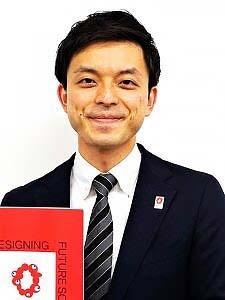
IMAMURA Harutoshi
Former Division Chief, Strategic Business Planning Division, Strategic Business Planning & Promotion Department, Public Relations Strategy Bureau, Japan Association for the 2025 World Exposition
Completed Environmental Engineering study at Graduate School of Engineering, Kyoto University in 2009. After working in the private sector and local government, he worked in planning and public relations strategy for Expo 2025, Osaka, Kansai, Japan, for about two years, from April 2019. He was in charge of the TEAM EXPO 2025 program and logo designing project.
(HORIKAWA Akina and HONDA Takayuki, Fellows at Knowledge Mobility based System Institute (KMS) and Science Communicators)
Original article was provided by the Science Portal and has been translated by Science Japan.




